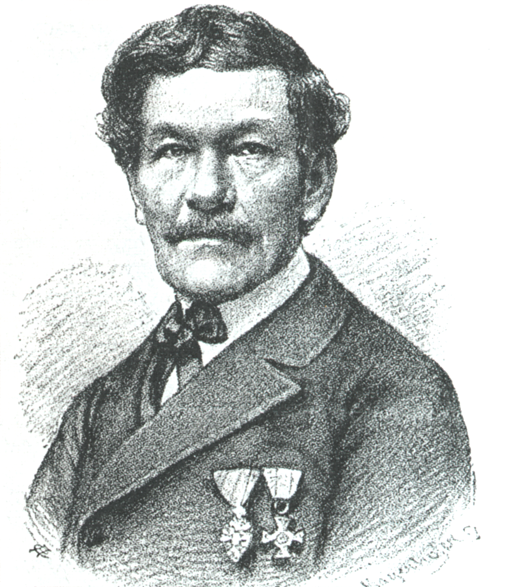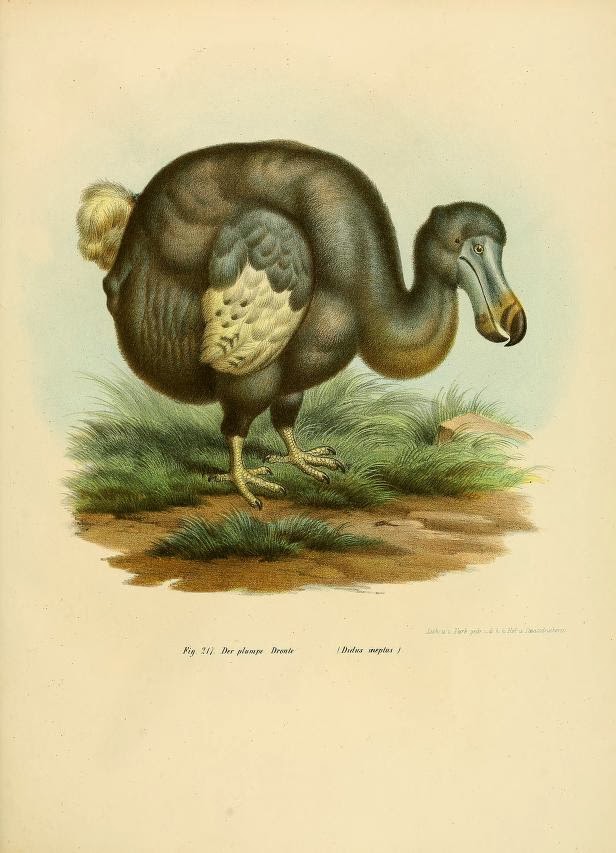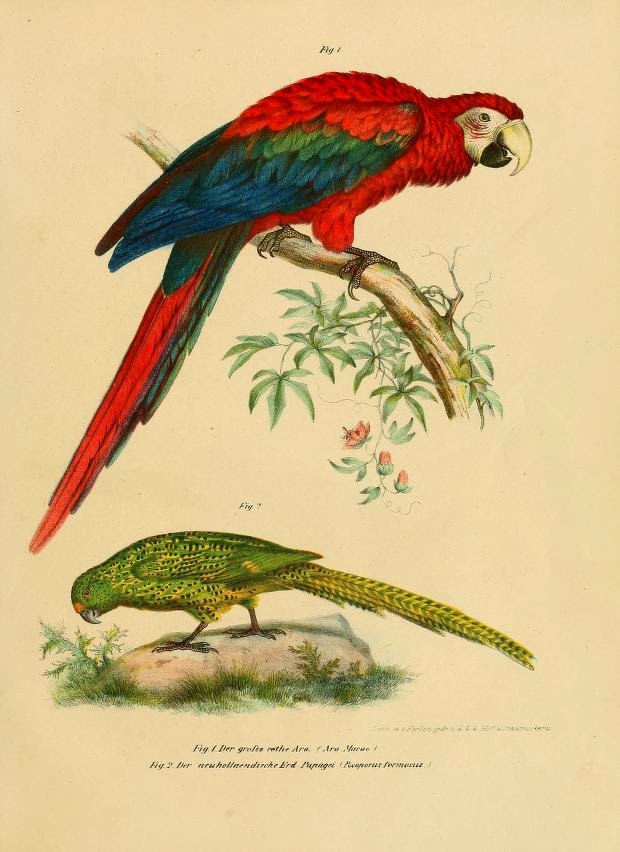 |
Leopold Joseph Fitzinger
Image: Wikipedia |
Maybe you are familiar with his surname? Fitzinger was responsible for identifying many genera including the Gastrophryne or narrow-mouthed toads, and the Cyrtopodion or bow-footed geckos, among others. His most significant scientific contributions to the field were a series of books published between 1826 and 1861 classifying reptiles, birds, and amphibians along with a catalogue of mammals, reptiles, and fishes native to the Archduchy of Austria.
His path to the profession was interesting. While always intrigued by nature, he started out as a pharmacist apprentice as an adolescent. Eventually, he went to the University of Vienna with fellow scientist Nikolaus Joseph von Jacquin. Jacquin would eventually become Professor of Botany and Chemistry and director of the botanical gardens of the University of Vienna. Fitzinger started out as a intern at the Vienna Natural History Museum and organized the orphaned reptiles and fish collection at a time when the institution was reshaping itself from a royal collector’s cabinet to a scientific research institution. When it became clear no positions would open up at the museum anytime soon, he accepted a job as a secretary at the Estates of Lower Austria in 1821. In 1833 and 1834, Fitzinger received honorary doctorates from the Universities of Königsberg and Hall.
It wasn’t until 1844, that he was appointed head of the reptile and mammal collections at the museum, a position which he served in for close to 20 years. He retired in 1861, but shortly after, went on to become the director of the zoos in Munich and Budapest. He died in 1884. During his life and after his passing, numerous academies and associations in both the U.S. and Europe appointed him an honorary member.
Fitzinger was influenced by his German colleagues: naturalist Lorenz Oken, biologist Johann Baptist von Spix, and naturalist Johann Jakob Kaup. He embraced nature-philosophical views and new classifications of animals. Essentially, he rejected the evolutionary theories of Darwinism and believed there were five animal classes: invertebrates, fish, reptiles, birds, and mammals.
 |
| Some [Dodos] were killed just for the gizzard which was “so large that it could provide two men with a tasty meal and was actually the most delicious part of the bird” (Cheke, Anthony S.; Hume, Julian Pender, 2008, pg.77-78) |
Now a little about the birds… The Dodo (Didus ineptus) once lived off the coast of Madagascar on the Mauritius Island. It was a part of the subfamily Raphinae, which included doves and pigeons. Until the arrival of humans to the island, this flightless bird had no natural predators. The Dodo bird had a diet rich in fallen fruit, nuts, seeds, bulbs, and roots. The last sighting of a Dodo bird was in 1662.
 |
| Scarlet macaws communicate with a variety of vocalizations and postures. Mated pairs engage in tactile communication when preening. |
Still found on the island of Coiba, the Ara Macao or the Scarlet Macaw is known for its bright colors and large tail. It is native to Central and South America and tends to live in humid lowland subtropical rain forests, open woodlands, river edges, and savannas. The Macaw subsists on a diet of mostly fruits, nuts and seeds, including large, hard seeds. They can live up to 75 years in captivity and between 40 to 50 years in the wild. The Macaw’s habitat has been endangered by deforestation and pesticide spraying for banana growth and export. These colorful birds are also vulnerable to poaching for the cage bird trade. As of 2008, they were listed as endangered by the U.S. Fish and Wildlife Services.
Interested in learning more about John James Audubon and The birds of America? Read the blog post here.
Check out more colorful and interesting birds covered in Bilder-atlas zur Wissenschaftlich-populären Naturgeschichte der Vögel in ihren the Flickr set here.








Leave a Comment